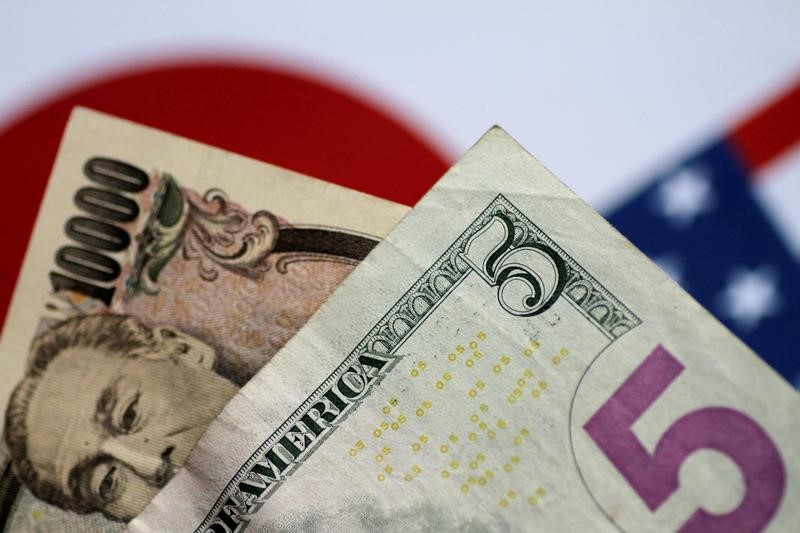Stock market today: S&P 500 falls as government shutdown, trade jitters persist
Investing.com-- Most Asian currencies kept to a tight range on Monday as risk appetite remained under pressure from persistent fears over increased trade tariffs under U.S. President Donald Trump.
The Japanese yen was an outlier, strengthening sharply on increased safe haven demand. The Chinese yuan also marked some gains on positive purchasing managers index data.
The dollar saw little strength despite a strong PCE inflation reading on Friday, as investors also fretted over the impact of Trump’s tariffs on the U.S. economy. The dollar index and dollar index futures both fell about 0.2% in Asian trade.
The Wall Street Journal reported that Trump will consider bigger and broader tariffs against major U.S. trading partners, as he gears up to announce more tariffs on April 2.
Fears of a U.S. recession also remained in play, with Goldman Sachs analysts forecasting a 35% chance of an economic slowdown in the next 12 months.
Japanese yen soars on safe haven demand
The Japanese yen was the best performer in Asia, with the USD/JPY pair falling 0.5% to as low as 148.73 yen.
The currency was chiefly boosted by safe haven demand, as investors pulled out of risk-driven assets en masse.
The yen was also buoyed by increased speculation over when the Bank of Japan will hike interest rates further. Hawkish signals from BOJ officials, coupled with strong inflation readings in the past two weeks, both cemented expectations for more rate hikes this year, underpinning the yen.
The yen took limited cues from mixed economic data. Industrial production read stronger than expected for February, while retail sales grew less than expected.
Chinese yuan firms on positive PMIs
The Chinese yuan firmed slightly on Monday, with the USD/CNY pair falling 0.1%.
The yuan was buoyed by some optimism over the Chinese economy, after manufacturing and non-manufacturing PMI data read stronger-than-expected for March.
The reading furthered the notion that Beijing’s aggressive stimulus measures were now bearing some fruit, and that the Chinese economy will recover in the coming months.
But Trump’s tariffs are expected to be a major headwind for China, given that Trump has threatened a slew of trade measures to further pressure Beijing. Trump had earlier this month imposed 20% tariffs against China, and could outline even more measures when he unveils his plans for reciprocal tariffs on April 2.
Broader Asian currencies moved little, with market holidays across South and Southeast Asia, for Eid, kept trading volumes muted.
The Australian dollar’s AUD/USD pair fell 0.2% before the conclusion of a Reserve Bank of Australia meeting on Tuesday, where the central bank is widely expected to keep rates unchanged. But the RBA could offer a less hawkish outlook amid some cooling in the Australian economy.
The South Korean won’s USD/KRW pair rose 0.1% even as industrial production data for February read stronger than expected.
